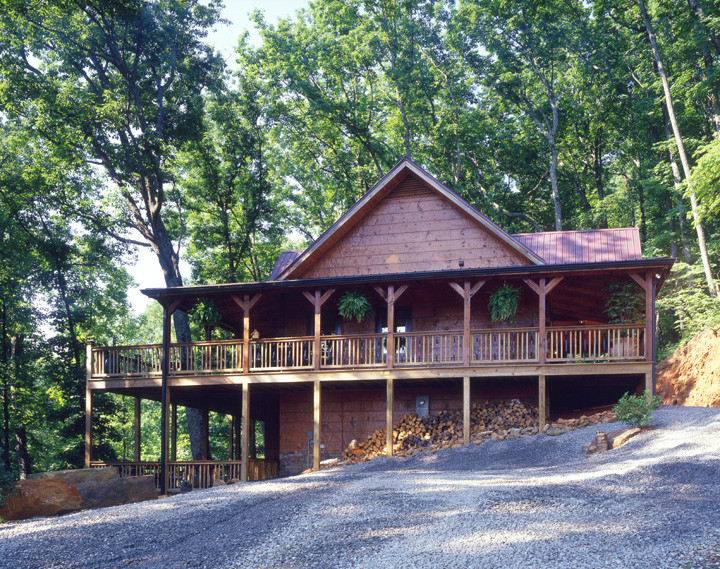How to Keep Termites and Bugs Away
Log homes offer warmth, charm, and a deep connection to nature, but they also require special care to prevent pest infestations. From termites to carpenter ants and beetles, wood-eating insects can cause significant damage to log homes if not properly managed.
Understanding how to protect your investment is essential to maintaining the longevity and beauty of your log cabin. Serenity Log Homes provides maintenance, cleaning, treatment, repair, restoration and cleaning services that ensures your home is in good shape. Here are some things for you to do that helps.
Choose the Right Wood Treatment
When building or maintaining your log home, selecting properly treated wood is the first line of defense against pests. Pressure-treated logs or logs treated with borate solutions provide excellent protection against termites, carpenter ants, and other wood-destroying insects. If your home is already built, applying a borate-based treatment can help repel pests and prevent infestations.
Get your FREE Perma-Chink Catalog here.
Keep Your Log Home Dry
Moisture is one of the biggest attractants for termites and wood-boring insects. To prevent an infestation:
- Ensure proper drainage around your home to avoid standing water.
- Maintain your roof, gutters, and downspouts to keep water from pooling near the foundation.
- Use sealants and finishes to protect the logs from excess moisture and decay.
- Install a vapor barrier in crawl spaces and basements to reduce humidity levels.
Regularly Inspect Your Log Home
Routine inspections help catch pest issues before they become major problems. At least twice a year, check for signs of termites, carpenter ants, and wood-boring beetles. Look for:
- Small holes in wood surfaces
- Sawdust-like frass (termite droppings)
- Hollow-sounding logs
- Mud tubes along the foundation (a sign of subterranean termites)
- Swarming insects, especially in the spring
If you notice any of these warning signs, contact a pest control professional immediately.
Keep Vegetation Away from the Home
Overgrown plants, stacked firewood, and mulch create the perfect environment for pests. Maintain a pest-free zone by:
- Keeping firewood at least 20 feet from the home
- Trimming shrubs and trees to prevent contact with the exterior walls
- Using gravel or rock instead of mulch near the foundation
- Keeping grass well-maintained to minimize hiding spots for insects
Seal Cracks and Gaps
Small openings in logs, chinking, and around windows and doors can serve as entry points for pests. Regularly inspect your home’s exterior and seal any gaps with caulk, chinking, or weather stripping to keep bugs out. Pay special attention to areas around plumbing and utility lines where insects often enter.
Use Natural Pest Repellents
Many natural substances deter pests without the need for harsh chemicals. Consider using:
- Essential oils like cedarwood, peppermint, and tea tree oil
- Diatomaceous earth around the home’s foundation
- Vinegar and citrus-based cleaners to repel ants and termites
- Cedar mulch, which naturally repels insects
Work with a Professional Pest Control Service
Even with the best prevention methods, hiring a pest control professional for annual inspections can provide peace of mind. Experts can identify potential risks, apply preventative treatments, and recommend solutions specific to your log home’s needs.
Maintain Proper Chinking and Staining
Log home chinking (the material used to seal gaps between logs) and staining not only enhance the home’s aesthetic but also serve as a barrier against insects. Use high-quality, pest-resistant chinking and regularly reapply stain to keep the wood protected from both moisture and pests.
A well-maintained log home can remain pest-free with proactive care and routine inspections. By using treated wood, managing moisture, sealing gaps, and employing natural deterrents, you can protect your log home from termites and bugs. Staying vigilant and working with professionals when needed ensures that your log home remains a safe, pest-free retreat for years to come.

